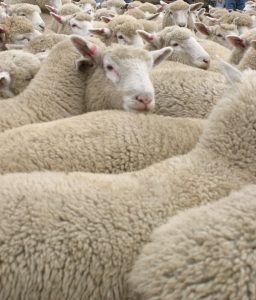 HEAVY lamb values would be most affected if the US decided to levy ag import tariffs as mooted by US president Donald Trump.
HEAVY lamb values would be most affected if the US decided to levy ag import tariffs as mooted by US president Donald Trump.
But recent heavy lamb saleyard price falls were yet not related to the advent of tariffs, according to agent and exporter sources.
Earlier this month Mr Trump posted on social media that US farmers should “Get ready to start making a lot of agricultural product to be sold INSIDE of the United States. Tariffs will go on external product on April 2nd. Have fun!”
Yesterday the Australian Financial Review, reported that Australia might face tariffs of 2-8 percent on ag products if an exemption was not granted. The newspaper said the 2-8pc range was estimated by trade experts and government sources based on talks with the Trump administration and public statements by US officials.
However, one exporter source said the situation is still uncertain, although the advent of tariffs was a big concern.
“I don’t think anybody knows and because of that real uncertainty I think most people are wanting to play it reasonably short as we go into that week beginning the 1st of April until we get some sort of indication.”
Any tariffs would likely be applied on stock as it arrived at US ports, meaning in-transit lamb might be subject to a tariff, he said.
“It won’t necessarily be applied just to what we process from that Monday the 2nd of April on.”
Domestic saleyard prices would then depend on the lead time before tariffs start. The exporter source said tariffs would also have a big impact on the millions of cattle being grain-fed in feedlots.
“At least on the processing of smallstock we can go a little bit short leading into that week until we get some certainty of what is or isn’t happening.”
“Nobody knows and we are hoping that obviously it is not the case, but it’s out of our control.
“But if there is a tariff implemented, it is probably going to have to be borne by all sectors of the industry – from the primary producer through to the processor through to the consumer,” he said.
“I don’t think anyone can expect that the consumer in the United States is going to wear the whole lot – hopefully there is nothing to be shared, that’s the best outcome.”
He said recent changes in the heavy lamb sales prices were due to some exporters taking forward positions and a greater supply of uncontracted export weight lambs consigned direct to meatworks, with lotfeeders under pressure to quickly turn off lambs approaching the 32kg cwt upper limit of most grids.
“I still think at the moment it is mainly demand and supply driven.
“I think lambs have fed very well over the last month.”
Agents agreed that recent saleyard price movements were more supply affected, although there had been “murmurs” about the potential impact of US tariffs.
Heavy lamb will be more vulnerable to US tariffs
Global AgriTrends analyst Simon Quilty said he believed Australian lamb would be more vulnerable to the impact of US tariffs than beef.
He said beef items into the US are priced well “and the US needs them.”
“Whereas with lamb it’s more of a luxury item.”
He said more vulnerable items of lamb included legs, short loins and racks, and to a lesser extent shanks, sourced from heavier lambs.
“They’re the four key items that when you look to place those anywhere else in the world it’s a step down in pricing.”
He said the “good news” is that if the tariffs are at 2-8pc, the “step down” in price is significantly less, and in some instances might be passed forward to the consumer.
“But if tariffs are much higher then it gets much harder to pass forward the cost.”
If a tariff was levied on Australian meat into the US he hoped the 2-8pc estimate was correct, Mr Quilty said Australia will be able to ride it out, “it will be manageable.”
“So you’re are going to find that trade and lighter lambs are not as affected, we’re talking about heavy lambs that are destined for the US market being the most vulnerable.”
Mr Quilty said the ongoing dry conditions in Australia continued to play havoc with markets and quality lamb production. But if there is already an element of discounting of heavy lambs in saleyards at the prospect of tariffs, Mr Quilty said after 2 April and some certainty, he expected markets to improve due to a shortage of supply.
“Just so much depends on what that tariff will be.”

What are the expectations of tariff effects on the goat market? All articles have not mentioned anything about the goat market, given that 60 percent of all goat exports go to the USA, this is more trade exposed then beef or sheep, and needs to be reported on.